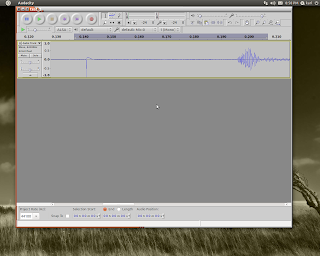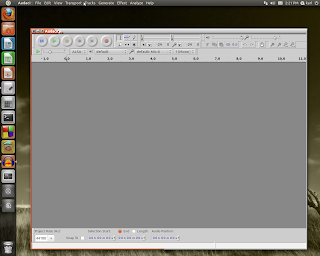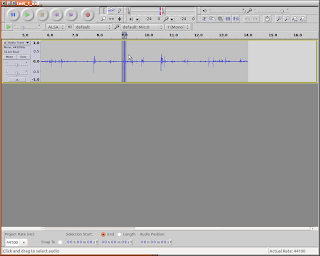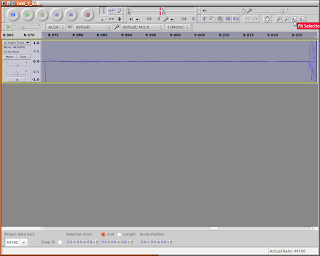
It's a given that this economy has been brutal on most people other than the top 10% income bracket. The popular press is filled with articles about managing money, where to invest your money, and how to save a bit here and there. Read any magazine or go online and you will find articles detailing how to use coupons to save on groceries, what time of year retailers tend to mark certain items down, how to cut your fuel consumption 10%, etc. While there's nothing wrong with saving gas - in fact there's much RIGHT with saving fuel - if you are paying $50/week on fuel, do you really think 10% (that's $5) saved will really get you out of the hole economically? REALLY? Especially when you consider an average 2-bedroom apartment rents for an average of $700 -$900/month in much of the U.S. Especially when food may cost a family of three $500/month? And your cable bill is likely another $100/month. Electric and gas - throw another $150/month average "on the grill". If you own a home in many areas you are likely paying thousands per year in county property taxes. I haven't even mentioned the chunk state and Federal income taxes take out.
Way back in the early 1900s, Vilfredo Pareto observed that 20% of the people in Italy at the time owned 80% of the land. In the late 1940s Dr. Joseph M. Juran applied this same idea to create a general rule that 20% of something accounts for 80% of the effects. This principle applies in many areas of life and commerce. Here are a few examples:
1) How many times have you observed in school that it's always the same one or two bad kids that cause most of the classroom disruptions?
2) It's well known by many police officers that a small subset of known criminals do most of the crimes in a given area.
3) At an electronic company I worked for several years, most of the failures and RMA returns we got were attributable to one or two problems. Granted, we got a few other types of complaints as well, but fully 85% were caused by one or two components we had lots of problems with. Once we got those two problem areas fixed, our warranty return rate went waaay down!
4) Typically, between 2 and 3 of a household's 8 or 10 expense categories account for 80% of its expenditures.
You may be saying "Gee, Karl. That's all well and good, but what does this have to do with paying my bills?"
Plenty!
The same "Pareto Principle" also applies to household and even business finances. Re-read #4 above and try an experiment:
Sit down and write out ALL your monthly expenditures, listed from largest to least. Right away you will see that out of the 8 or 10 things you listed, between 2 - 4 categories are where you spend most of your net income. For most of us, rent or mortgage occupies the number 1 slot. Food and/or car payments follow next, utilities, cable, and so on. A Pareto graph shows this in startling, visual clarity. A Pareto graph is similar to any other bar graph except the items are shown in descending order of their value - with the largest one being on the far left-hand side of the chart. This gives a quick visual idea of which few items are doing the most damage, as it were.
See the hypothetical chart above. You can see that "1" and "2" - whatever they are - amount to 81% of the expenses, while the rest of the stuff only amounts to 19% of the total. For many people rent and food, or rent and car payments, are their numbers "1" and "2". So if you CAN get into a cheaper rent situation, or put the wife to work saving on groceries with coupons, you can QUICKLY save MANY dollars per month. An hour a week spent couponing can indeed produce dramatic results! *(For those of you who noticed, YES, the "cumulative amount" line is missing on my example chart - but it is easily enough to calculate how close to the critical 80% line the cumulative total of the largest two or three items is. Simply add the first 2 or three itmes, then divide that figure by the grand total of everything. That will give you the fractional percentage of total expenditures those items make up.)
See the links below for examples and how to use a spreadsheet to create your own Pareto graphs.
http://asq.org/learn-about-quality/cause-analysis-tools/overview/pareto.html
http://www.vertex42.com/ExcelTemplates/pareto-chart.html
The Upshot of All This:
Basically, before you worry too much about saving $5 on a $50 weekly gasoline fill-up, consider dealing realistically with the bigger stuff FIRST. Granted, you might be stuck in a mortgage. Or leaving your apartment for another might not be feasible due to work or school ties. But likely there ARE other large, but somewhat negotiable bills that can be pared down with minimal effort that would save tens of dollars per month, if not more. I found it totally mind boggling during my teen years how my mother would scream about the cost of a roll of paper towels, while Dad drove 80 - 100 miles round trip to work every day. Between wear and tear, depreciation, and gasoline, driving that car ALONE was eating HUNDREDS of dollars per week!! We could have bought LOTS of paper towels - and other things - on the money saved if we moved closer to Dad's work or if he even got other employment closer to home. The family was hemorrhaging hundreds of dollars EVERY MONTH just in Dad's work expenses while Mom worried about $2/week in paper towels. Incredible. That's a bit like worrying about a scratch on the coffee table after a tornado just tore the roof off the house.
I'm in NO WAY saying "go out and waste gas, paper towels, or anything else"! What I AM saying is this society has got people buffaloed into worrying about a few pennies when it's often costing MORE to live "normally" than one makes working. Many parents and the schools have failed totally in teaching folks the realities of personal finance and earning a living in America. The media also strives to keep you focused on minutiae - they want you "on the string" working slavishly, watching their programming, and handing your hard-earned money to their advertisers.
A quick word about driving a car:
You can also do a Pareto analysis within any category of your expenses, too.
A good place to start is your car. You may or may not make payments, you have depreciation, you'll make repairs if you keep it long enough, you may pay taxes on it, ... These expenses can be Pareto-charted, too.
I have run the math, figuring PER MILE - guess what: Even as pricy as gasoline has been, fuel is the LEAST of my car related expenses when figured per mile. Maintenance (tires, batteries, tune-ups, belts, hoses, ...) followed by monthly insurance bills are what I'm really paying out for. "Per mile" figures prominently in how the car leasing companies figure their economics; and it's quite valid for households too.
People don't shell out weekly for a timing belt or a fuel innjector cleaning, so they forget to figure it into what they are really spending to drive.

























